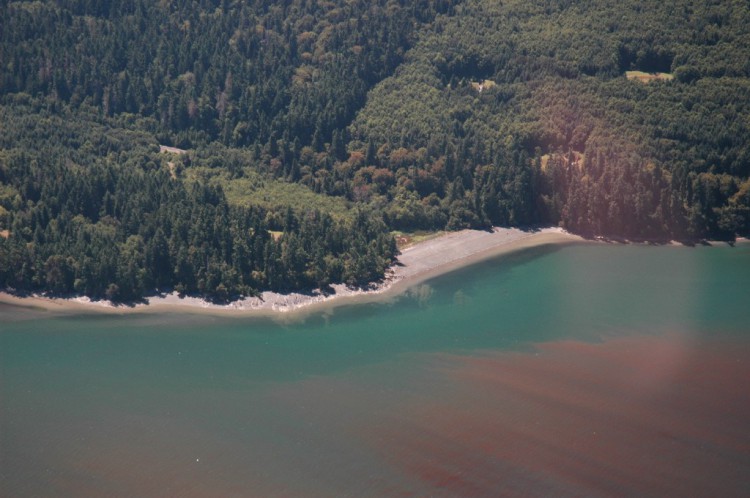In June, the straits, bays and islands of Puget Sound experienced some of the most extensive harmful algal blooms (HABs) in recent memory, including at least five potential toxin producers. Blooms of Heterosigma akashiwo, which causes massive fish kills, were widespread and threatened the salmon net pen mariculture industry. Enhanced HAB monitoring in the area led to an advanced warning of the bloom, which helped salmon farmers reduce fish mortalities.

AnNCCOS sponsored ECOHAB project established several monitoring sites, including known HAB ‘hotspots’ of H. akashiwo. These locations are now integrated into the SoundToxins program, a volunteer-based partnership managed by NOAA’s Northwest Fisheries Science Center and Washington State Sea Grant. SoundToxins provided real-time data describing H. akashiwo relative abundance and location to American Gold Seafood, a producer of approximately 15 million pounds of fresh salmon each year from their marine salmon farms. In addition, a new toxin screening test, developed through this project, made it possible to report relative toxicity of H. akashiwo blooms observed near the salmon farms and is pinpointing environmental parameters conducive to this cell’s toxin production. In response to reports of cell abundance and toxicity, fish were starved a few days prior to the bloom, which helped reduce mortalities.
Kevin Bright, American Gold Seafoods manager stated, ‘This is one of the longest and probably most extensive Heterosigma bloom events I’ve seen. One of our farm sites maintained cell counts over 1 million per liter from 11-26 June. The stars aligned for a perfect storm. Lots of Fraser River water, sunlight, some big tidal upwelling the week prior and a bit of Victoria’s sewage resulted in happy little Hetero’s.’ About 80,000 fish were lost, most in the six pound range.
For more information, contact Quay.Dortch@noaa.gov.
